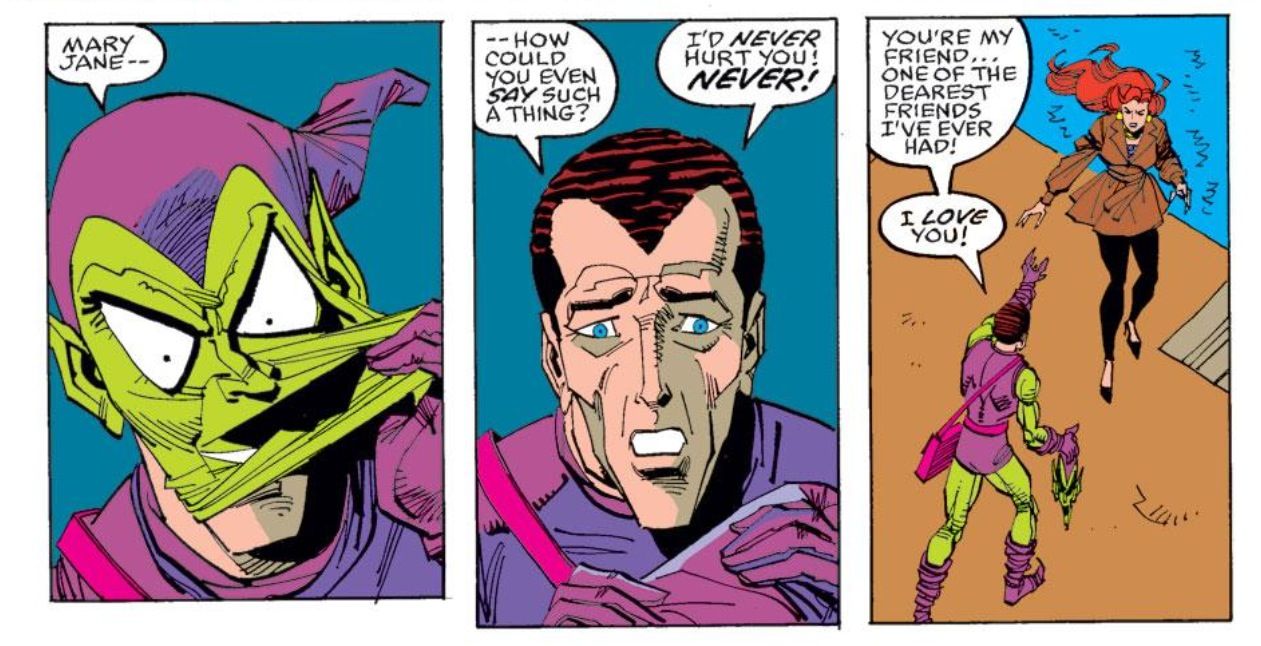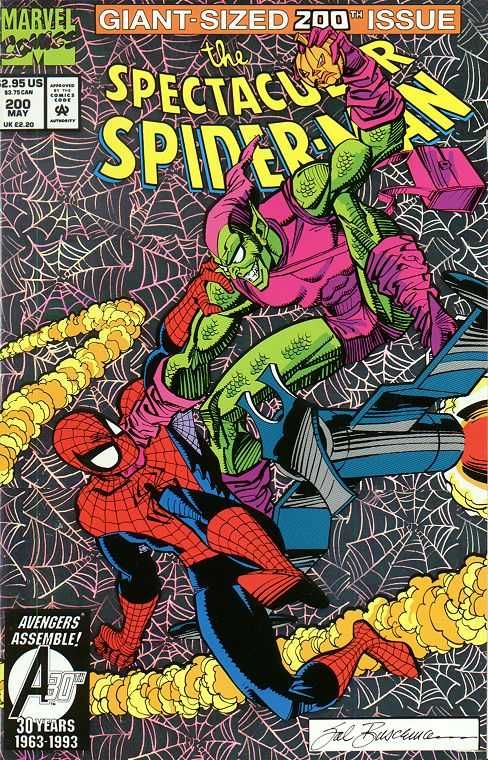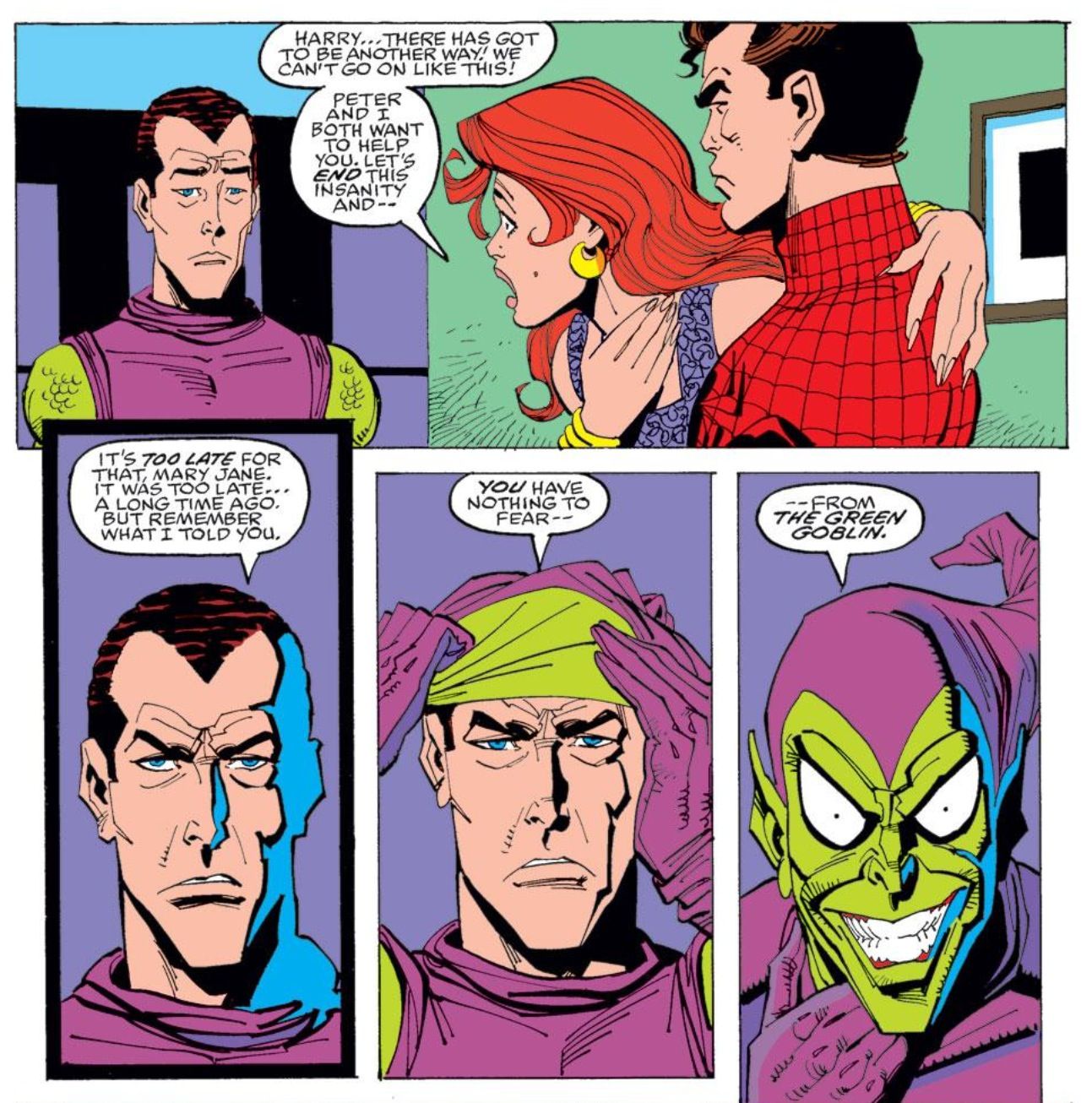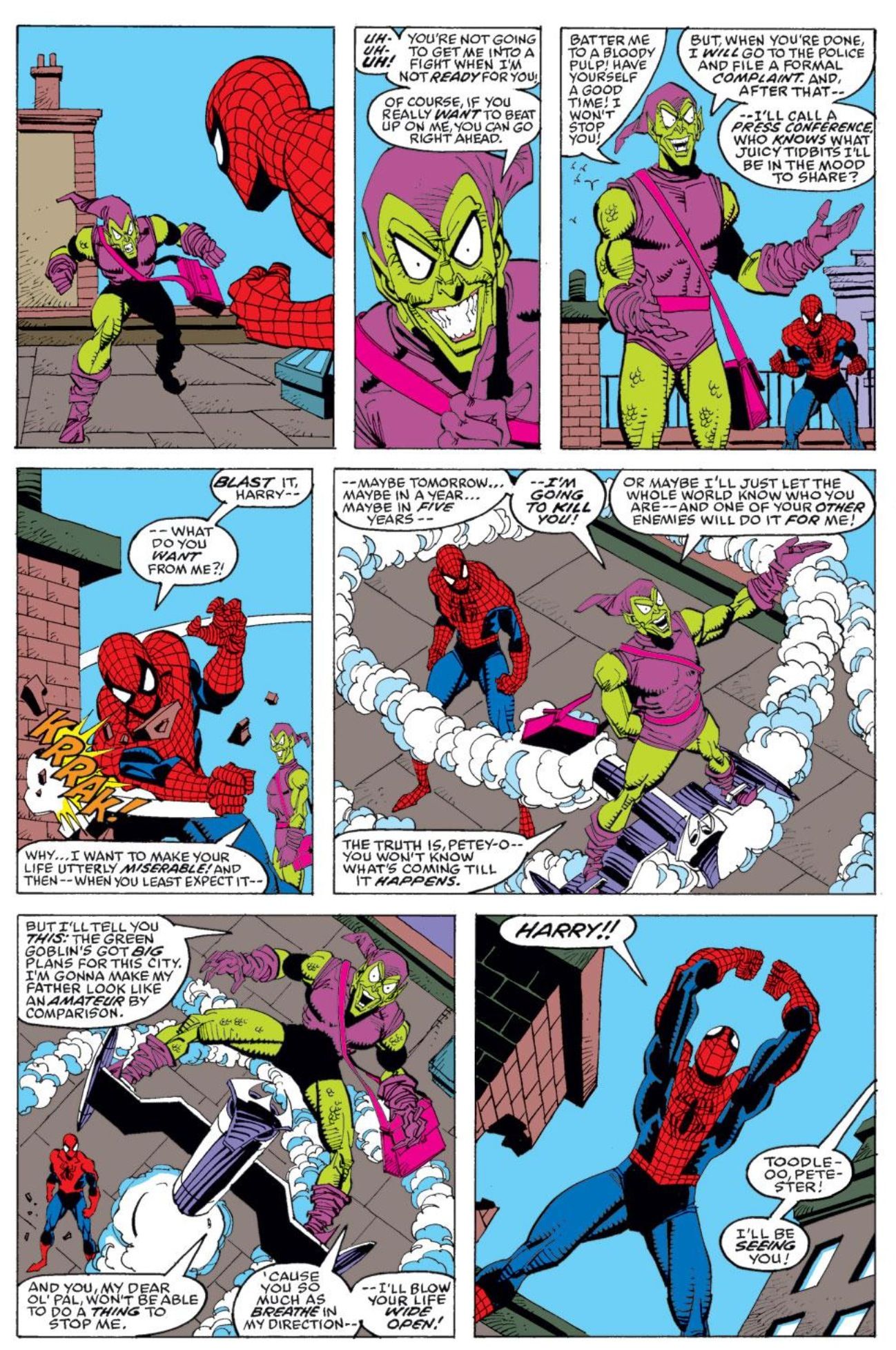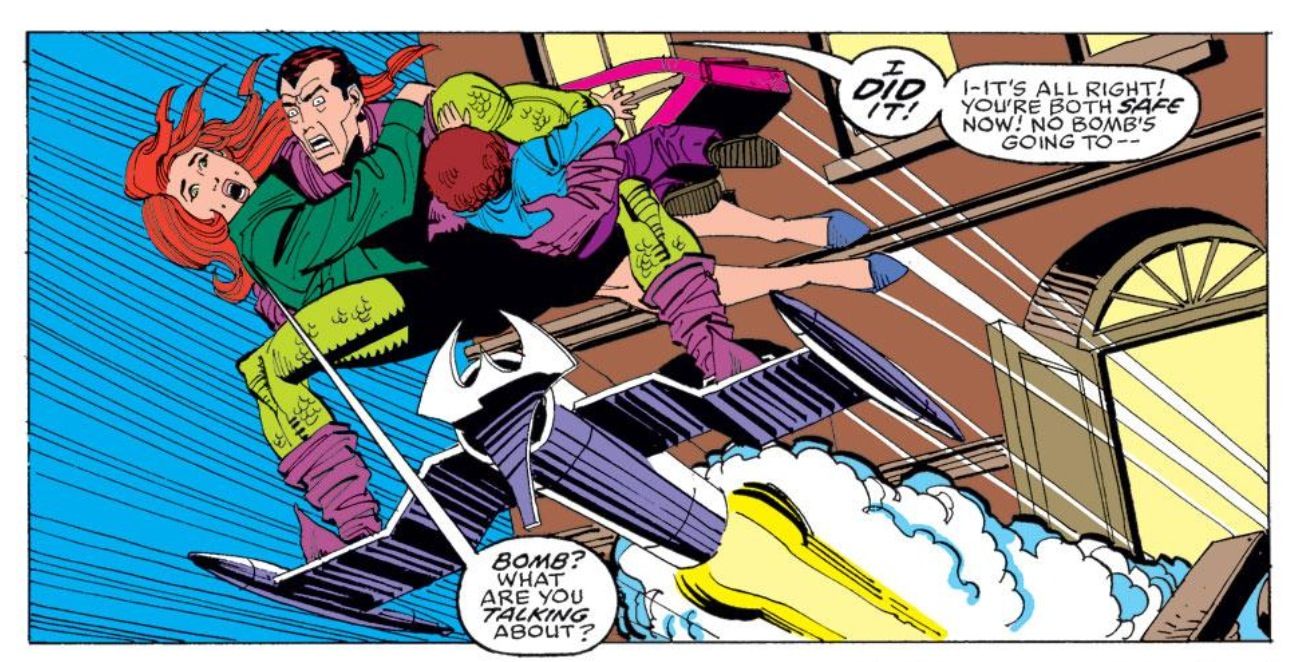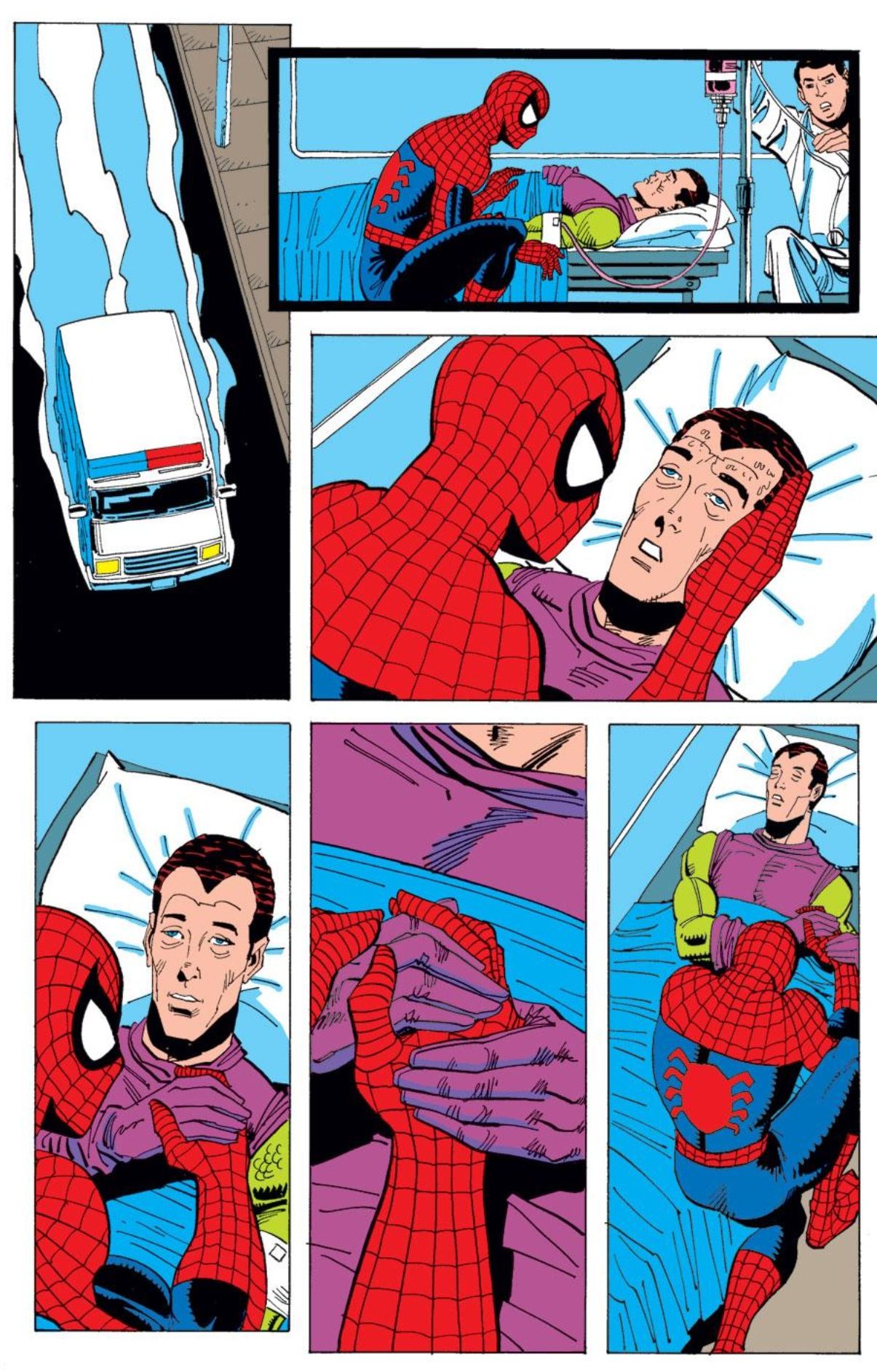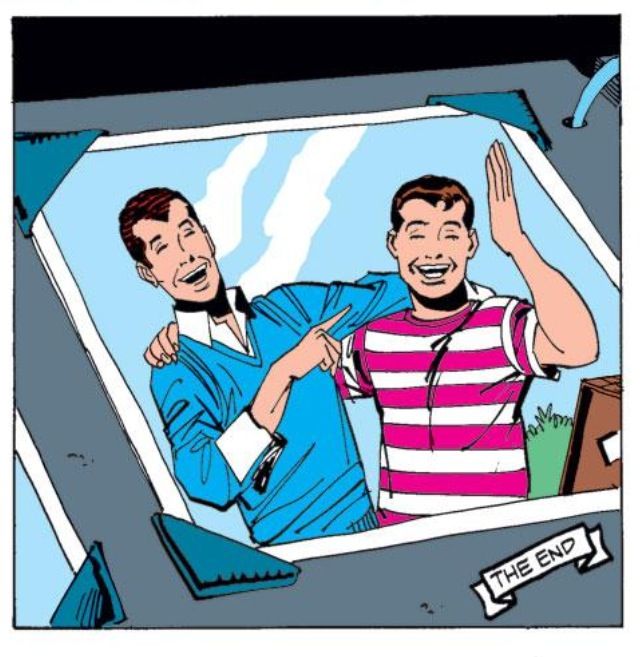In this column, Mark Ginocchio (from Chasing Amazing) takes a look at the gimmick covers from the 1990s and gives his take on whether the comic in question was just a gimmick or whether the comic within the gimmick cover was good. Hence "Gimmick or Good?" Here is an archive of all the comics featured so far. We continue with 1993's foil cover for Spectacular Spider-Man #200...
Spectacular Spider-Man #200 (published May 1993) – script by J.M. DeMatteis, art by Sal Buscema
There are few guarantees in this world: death, taxes, and a “double zero” Marvel comic book from the 1990s with some kind of cover enhancement. In the case of Spectacular Spider-Man #200, which marked the “final” battle between Spider-Man and the second Green Goblin Harry Osborn, that cover enhancement was shiny, reflective silver foil.
But what about inside the comic?
J.M. DeMatteis was arguably Marvel’s best Spider-Man writer in the early 1990s. While David Michelinie and Todd McFarlane (and later Erik Larson and Mark Bagley) had the higher profile gig on Amazing Spider-Man, DeMatteis and Sal Buscema quietly crafted superior Spider-Man stories during the same timeframe. Spectacular Spider-Man #200 was the ultimate payoff to the Spider-Man/Peter Parker and Green Goblin/Harry Osborn saga that was reinvigorated a few years earlier in DeMatteis/Buscema’s “Child Within” arc.
During this storyline, which also carried over into Spectacular #189 (complete with 30th anniversary hologram cover), Peter’s “best friend,” Harry is once again plagued by the insanity that caused him to don his father’s Green Goblin attire during the Bronze Age era of Amazing Spider-Man. As one of the only members of Spidey’s rogues gallery to know the hero’s secret identity, Harry was always capable of striking at Peter from a number of different angles. In this storyline, and specifically in Spectacular #200, DeMatteis explores Spider-Man’s vulnerabilities to Harry better than any other writer I can think of.
What made DeMatteis such an excellent writer was his focus on characterization. He wasn’t afraid to take the existing set of characters from Spidey’s world and put a brand new coat of a paint on them in a way that made them compelling (see also Kraven in “Kraven’s Last Hunt”). He used battle sequences as a way to elevate tension, not as a crutch when he ran out of things for his characters to say.
Case in point is the opening sequence of Spectacular #200. Poor Mary Jane, Peter’s wife, is out for a walk when the Goblin sneaks up behind her and abducts her to take her to the site where Hary’s father Norman killed Peter’s first love, Gwen Stacy. It looks like history is doomed to repeat itself, and even MJ accepts her fate, but the downward spiraling Harry surprises everyone by telling her that he’s just up there to talk. He takes MJ home when Spider-Man shows up ready to throw down.
Again, it looks like things are going to escalate quickly after Spider-Man punches the Goblin, but Harry doesn’t retaliate and instead gently removes Spidey’s mask to leave Peter, MJ and Harry – three old friends – in the same room. Peter and MJ plead with Harry to get some help, but he tells them with great sorrow that it’s “too late” from him. Buscema knocks this moment out of the park, showing Harry’s vacant face and then juxtaposes it with the maniacal grin of his Goblin mask.
The mind games continue as Harry randomly shows up to hound Peter as the Goblin, threatening to kill him, reveal his secret identity to the world, or both. Something that DeMatteis does masterfully here is demonstrating the parallels of Harry’s descent into madness with Peter’s. Harry is the “crazy” one who needs “help” from medical professionals, but Peter is the one constantly losing control whenever his old friend confronts him. In one scene on a rooftop, Peter quickly dons his Spider-Man costume and physically snaps. The Goblin appears ready to finally play ball and give Spidey the fight he’s expecting but then pulls the rug out from under him one more time, telling Peter he’s not going to fight him, but rather, “I want to make your life utterly miserable! And then – when you least expect it ... I’m going to kill you.” The Goblin then leaves the scene, having defeated Spider-Man without ever laying a finger on him.
Harry’s sadistic taunting is all a set-up for his final act of redemption, which like every other major character moment in this comic, is captured perfectly by DeMatteis and Buscema. He lures Peter and MJ to the Osborn Foundation townhouse and FINALLY, after an entire comic worth of madness, engages Spider-Man in battle. Harry paralyzes Spidey with a drug and is set to blow the two of them up inside the townhouse when he realizes both MJ and his son Normie are still in the house. Peter urges Harry to be the hero he physically can’t be in the moment and save MJ and Normie. Harry is ready to celebrate his act of heroism when MJ admonishes him for leaving Peter in the house. Harry rushes back in and rescues his best friend.
Between the force of the explosion, and an experimental version of the goblin serum he took to become more powerful than his father, Harry collapses and starts convulsing. When Peter asks Harry why he came back for him, he says matter of factly, “you’re my best friend.”
As if this comic wasn’t sorrowful enough, DeMatteis and Buscema proceed to really drive how the emotional levity of Harry Osborn’s story by having his death sequence take place over two pages without a single word of dialogue. First there’s Spider-Man and Harry in the back of an ambulance and then the saddening scene of watching Spider-Man assumingly tell MJ (who’s still holding Normie) that their friend is gone.
The comic’s last panel – an old photo of Peter and Harry sharing a laugh together during their college years – puts a pit in my stomach 20 years later. Harry’s death is completely earned, dignified and expected, and it still feels like a sucker punch each and every time I open this comic (and this is not because Marvel resurrected the character after the “Brand New Day” arc). If that’s not amazing storytelling, I don’t know what is.
As someone who has read a lot of Spider-Man comics over the years, I’ve always felt the writers who capture the character best are the ones who understand that at its core, that Spider-Man’s story is one of love, family and loss. In Spectacular #200, we have a study of all three, as all of these characters come to terms with how their actions have done irreparable harm to each other. Harry is tormented by his father, and in turn, seems doomed to torment his son. Harry’s torment of Peter, turns Peter into a raging animal around the ones he loves. MJ’s desire to play peacemaker, ultimately turns Harry, Peter and Harry’s wife Liz against her. And little Normie quietly plays with his Spider-Man doll by ripping its head off (P.S., for you readers of Superior out there, I’m totally putting money on the fact that the “new” Goblin is Normie).
So whereas Spectacular #200 is just another “anniversary” double-sized issue with a cover enhancement, and the shocking death of a long-time character – such a cliché for 90s comics books – DeMatteis and Buscema carry out this otherwise tired story-type with such mastery, it still stands as one of my favorite Spider-Man stories ever.
Verdict: Good

